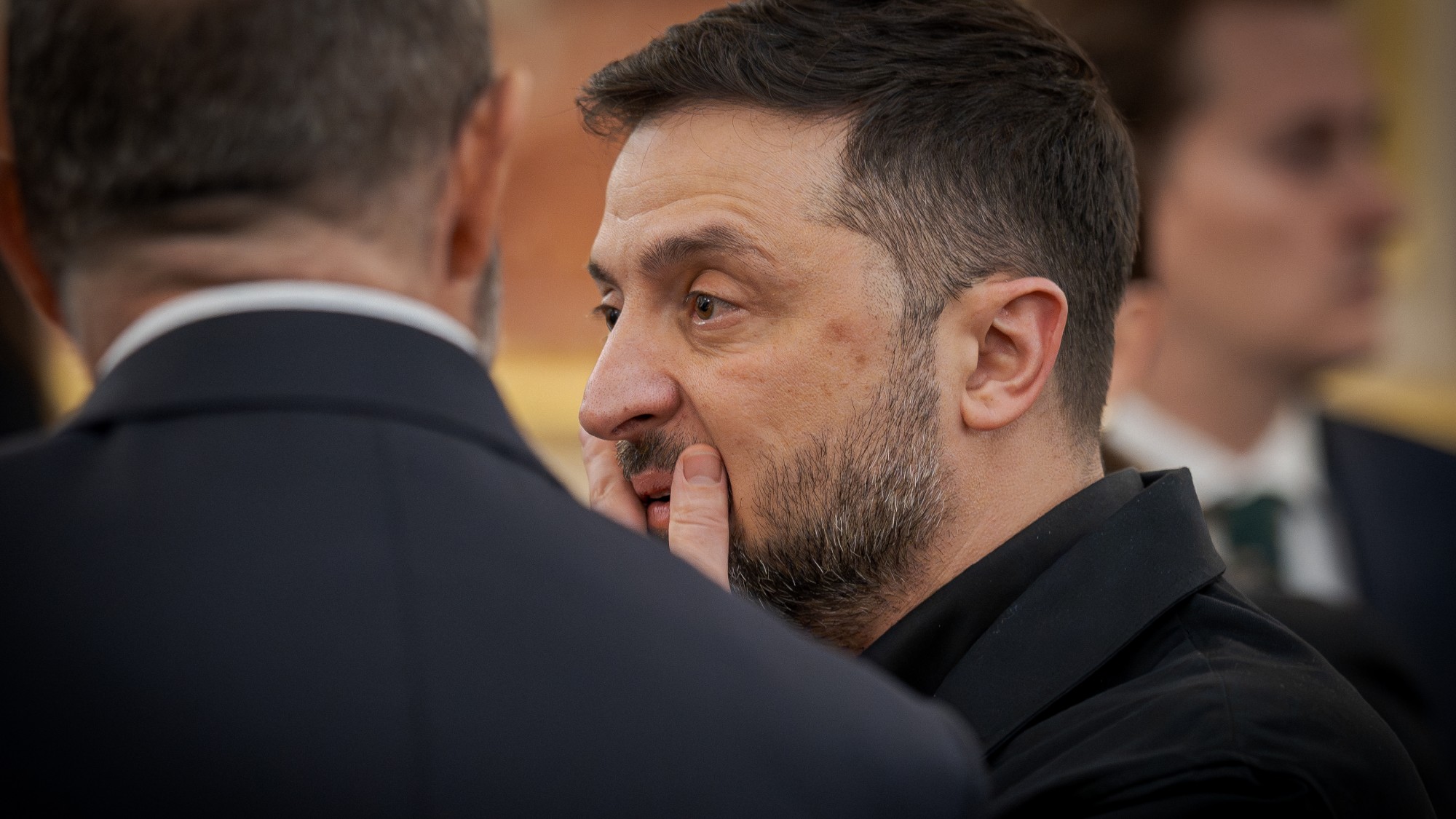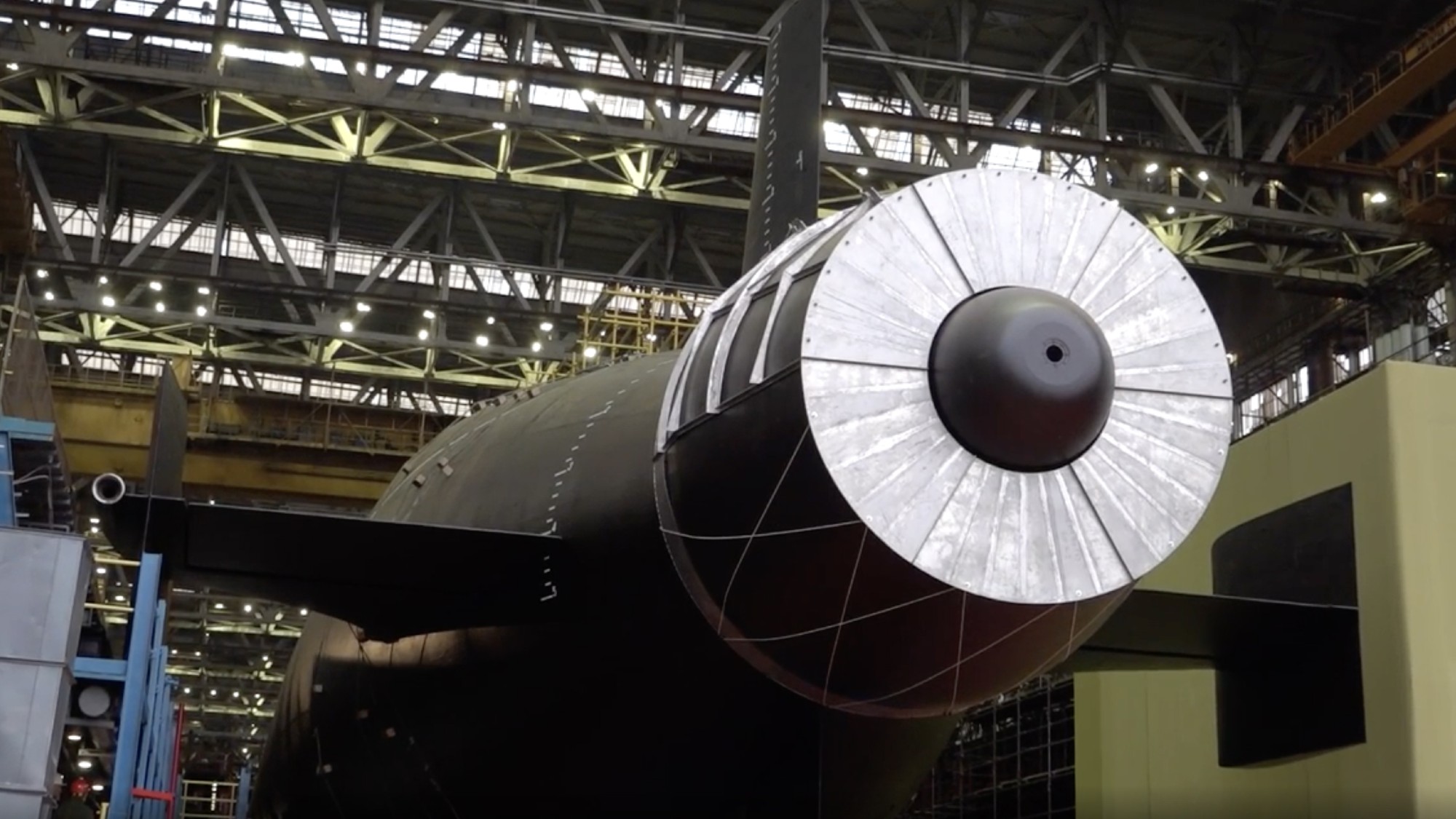‘Pinpoint accuracy’: what are the M270 rocket systems the UK is sending to Ukraine?
Move to provide Kyiv with longer-range launchers risks further provoking the Kremlin

Britain will supply Ukraine with cutting-edge M270 launchers to help the country defend itself from ongoing Russian attacks, the Ministry of Defence has announced.
The multiple-launch rocket systems (MLRS) can strike targets up to 80km away with “pinpoint accuracy”, enabling the Ukrainian army to hit Russian targets that are currently out of their range.
In a statement Defence Secretary Ben Wallace said the move reflected Russia’s changing tactics and the Ukrainian military’s more pressing need for longer-range precision weapons to defend the country.
The Week
Escape your echo chamber. Get the facts behind the news, plus analysis from multiple perspectives.

Sign up for The Week's Free Newsletters
From our morning news briefing to a weekly Good News Newsletter, get the best of The Week delivered directly to your inbox.
From our morning news briefing to a weekly Good News Newsletter, get the best of The Week delivered directly to your inbox.
“These highly capable multiple-launch rocket systems will enable our Ukrainian friends to better protect themselves against the brutal use of long-range artillery, which Putin’s forces have used indiscriminately to flatten cities,” Wallace said.
“We cannot stand by while Russian long-range artillery flattens cities and kills innocent civilians,” added Boris Johnson on Twitter, when the news was announced.
‘Shoot and scoot’ principle
The UK is the first country to send Ukraine the US-made MLRS, of which it has 42 in total. According to Military.com, the system can launch 12 rockets, packaged in “two six-rocket pods”, in less than 60 seconds.
The launcher is mounted on a track and can reach a maximum speed of 40kph. The system employs something the site calls the “shoot and scoot” principle, meaning it gives the soldier using it a chance to flee the scene before the opponent’s drones spot what is happening.
A free daily email with the biggest news stories of the day – and the best features from TheWeek.com
An unspecified number of Ukrainian troops will receive training in the UK on how to use the launchers, which are nearly seven metres long. The training is understood to take several weeks, said The Independent.
This is not the first time in the conflict that training has taken place overseas: back in April, a small number of Ukrainian soldiers visited an unnamed English military base to be taught how to use the Mastiff armoured vehicles donated by Britain.
Follows US announcement
The exact quantity of M270s being supplied to Ukraine has not been revealed by the Ministry of Defence, although the “number is small and will be comparable to the US decision to send four HIMARS”, said The Guardian.
Joe Biden announced last week that the US would send Ukraine more advanced rocket systems, including the M142 High Mobility Artillery Rocket System (HIMARS), which can launch multiple precision-guided missiles at targets up to 45 miles away.
The two systems are “intended to be complementary”, although the HIMARS is lighter and thought to be more modern than the M270s.
As was the case with the US, the UK has “sought assurances from Kyiv that the M270s would not be used to strike targets within Russia”, added The Guardian.
Risks provoking Kremlin
The move risks provoking the Kremlin, which was already angered by Biden’s move to send four HIMARS.
On Russian state TV on Sunday, Vladimir Putin warned that if Western countries sent Ukraine missiles with longer ranges, Russia would “draw appropriate conclusions” and “strike at those targets that we are not striking yet”, reported the BBC. The Russian president did not specify what those targets might be.
Putin’s comments followed reports of Russian missiles striking Kyiv for the first time in more than a month, in the early hours of Sunday morning. The Independent told of “multiple explosions hitting infrastructure targets” in the Ukrainian capital on Sunday.
Kate Samuelson is The Week's former newsletter editor. She was also a regular guest on award-winning podcast The Week Unwrapped. Kate's career as a journalist began on the MailOnline graduate training scheme, which involved stints as a reporter at the South West News Service's office in Cambridge and the Liverpool Echo. She moved from MailOnline to Time magazine's satellite office in London, where she covered current affairs and culture for both the print mag and website. Before joining The Week, Kate worked at ActionAid UK, where she led the planning and delivery of all content gathering trips, from Bangladesh to Brazil. She is passionate about women's rights and using her skills as a journalist to highlight underrepresented communities. Alongside her staff roles, Kate has written for various magazines and newspapers including Stylist, Metro.co.uk, The Guardian and the i news site. She is also the founder and editor of Cheapskate London, an award-winning weekly newsletter that curates the best free events with the aim of making the capital more accessible.
-
 How weight-loss jabs are changing the way we eat
How weight-loss jabs are changing the way we eatIn The Spotlight Anti-obesity drugs have been a boon for Babybel but are supermarkets ready for a slimmed-down Christmas?
-
 Sudoku hard: December 18, 2025
Sudoku hard: December 18, 2025The daily hard sudoku puzzle from The Week
-
 Crossword: December 18, 2025
Crossword: December 18, 2025The daily crossword from The Week
-
 Taiwan eyes Iron Dome-like defence against China
Taiwan eyes Iron Dome-like defence against ChinaUnder the Radar President announces historic increase in defence spending as Chinese aggression towards autonomous island escalates
-
 Is conscription the answer to Europe’s security woes?
Is conscription the answer to Europe’s security woes?Today's Big Question How best to boost troop numbers to deal with Russian threat is ‘prompting fierce and soul-searching debates’
-
 Trump peace deal: an offer Zelenskyy can’t refuse?
Trump peace deal: an offer Zelenskyy can’t refuse?Today’s Big Question ‘Unpalatable’ US plan may strengthen embattled Ukrainian president at home
-
 Vladimir Putin’s ‘nuclear tsunami’ missile
Vladimir Putin’s ‘nuclear tsunami’ missileThe Explainer Russian president has boasted that there is no way to intercept the new weapon
-
 The Baltic ‘bog belt’ plan to protect Europe from Russia
The Baltic ‘bog belt’ plan to protect Europe from RussiaUnder the Radar Reviving lost wetland on Nato’s eastern flank would fuse ‘two European priorities that increasingly compete for attention and funding: defence and climate’
-
 How should Nato respond to Putin’s incursions?
How should Nato respond to Putin’s incursions?Today’s big question Russia has breached Nato airspace regularly this month, and nations are primed to respond
-
 Russia’s war games and the threat to Nato
Russia’s war games and the threat to NatoIn depth Incursion into Poland and Zapad 2025 exercises seen as a test for Europe
-
 What will bring Vladimir Putin to the negotiating table?
What will bring Vladimir Putin to the negotiating table?Today’s Big Question With diplomatic efforts stalling, the US and EU turn again to sanctions as Russian drone strikes on Poland risk dramatically escalating conflict